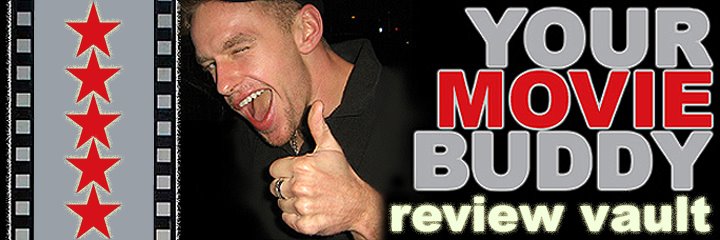4.5 stars (out of 5)
By R. Kurt Osenlund
The dialogue in the biting British politi-comedy “In the Loop” is delivered like rounds from a machine gun. Before the impact of one furiously funny joke can even sink in, you've already been slugged with five more zingers. A brilliant, seamless blend of ace comedic writing and masterful actor improv, this satire of the zany inner-workings of the U.K. and U.S. governments on the brink of Middle Eastern war is teeming with acidic wit. It's a rare specimen of intelligent comedy, constantly remaining a step ahead of you and commanding full control of both your brain cells and your funny bone. A hit at this year's Sundance and Tribeca Film Festivals, “Loop” is rude, shrewd, scarily suggestive of actual governmental goings-on, and populated by an immensely entertaining ensemble cast. It draws inspiration from (and comparisons to) some of the cinema's funniest political films, and in the process, rightfully joins their ranks.

An offshoot of the award-winning BBC series “The Thick of It,” “Loop” is directed by series creator Armando Iannucci and written by original series writers Iannucci, Jesse Armstrong, Simon Blackwell and Tony Roche. A few of the show's actors reprise their small screen roles, including Peter Capaldi, who brings riotous and brutal volatility to Malcolm Tucker, the Prime Minister's wildly unbalanced but exceptionally erudite director of communications. Presumably set during the days leading up to the invasion of Iraq (it is never explicitly said), “Loop” begins with Malcolm up in arms about a recent radio interview in which Simon Foster (Tom Hollander), Britain's simple-minded minister for international development, shoves his leg down his throat when he calls the impending war “unforeseeable.” The ambiguous remark ignites a media firestorm and disrupts the delicate balance of the U.K's official position on the issue. Joined by a new political advisor named Toby (Chris Addison), Simon is soon shipped across the pond to D.C., where a ravenous batch of American bureaucrats is waiting to pounce. Stateside, the colorful players include TV alum Mimi Kennedy as hard-assed assistant secretary for diplomacy, Karen Clarke; “Soprano” bad boy James Gandolfini as a hot-headed Pentagon general; and “My Girl” Anna Chlumsky as Karen's eager assistant, Liza, whose hastily-penned document on the unnamed conflict becomes a key element in the film's hilariously hectic plot.
Like the egocentric airheads in last year's “Burn After Reading” (funnyman David Rasche even appears in both movies), all the characters in “Loop” are out for themselves and intent on deceiving one another. Here the laugh and fear factors are raised considerably since many of these characters' actions and words have a direct effect on the global climate (it's fiction, but undoubtedly drawn from fact). The filmmakers have a field day with the various consequences of language, be it the way the press gobbles up Simon's daft, on-the-spot comments about “climbing the mountain of conflict”; Malcolm's mind-blowing, obscenity-laced tirades that he unleashes on anyone who crosses his path; or how some simple editing can sway the decision of the U.N. Security Council. The most fun to be had in this movie is watching its inhabitants duke it out in an endless stream of articulate arguments, each one sprinkled with a generous dose of clever pop culture references. As the interns, officers, advisers and assistants attempt to one-up their adversaries in mini-wars of corrosive wit, nods to Harry Potter, Julie Andrews, YouTube, “Bugsy Malone” and “Love, Actually” are tossed around like grenades from the characters' verbal arsenal. And yet, none of the nods are flaunted – they're simply woven into the film's razor-sharp comedic synergy. (Watch also for a diverting side bit with the invaluable Steve Coogan.)

The components of “Loop” call to mind some imperial predecessors from Hollwood's laugh factory. The melding of the machine of media with the machine of war evokes memories of Barry Levinson's “Wag the Dog,” while the message that basically tells us to stop worrying and love those machines is an unmissable connection to Stanley Kubrick's immortal “Dr. Strangelove.” The hand-held, primarily soundtrack-free, pseudo-documentary style is reminiscent of the films of Christopher Guest, and the sheer, manic hilarity of the British actors' uncensored delivery immediately brings us back to “Monty Python.” Thinking in terms of television, that same hand-held, two-camera approach also reminds us of the deadpan scenarios in “The Office,” while the entire cast of “Loop” might be described as the brainiacs on “The West Wing” after having swallowed fistfuls of performance-enhancing drugs. Iannucci, who makes an enormously impressive feature debut, combines all of these winning ingredients, boils them, and serves them up as a deliciously twisted tea of smart, scalding humor.
2009 is shaping up to be a banner year for comedy, the most difficult film genre to execute well. Though I wasn't as drunk on “The Hangover” as the rest of America, that film became a huge success and is inarguably a cut above many other titles of its screwball kind. Disney/Pixar's “Up” – still the best movie of the year thus far – is packed with consistent, genuine laughs. And speaking of year's best, I recently hailed Sacha Baron Cohen's shockfest “Brüno” as 2009's funniest movie. I consider “In the Loop” a very close second. Next up is Judd Apatow's latest, “Funny People,” which throws the raison d'être right into the title. Let's see if Mr. Apatow can't keep this hysterical movement cooking with gas.







